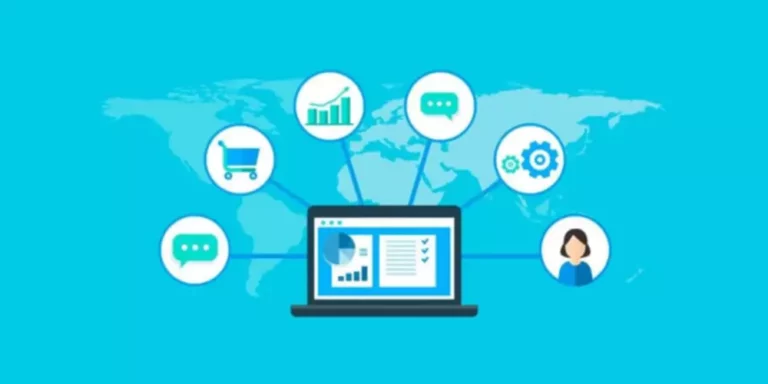Content
With the adoption of various digital payment methods, people have become more accepting of this form of monetary exchange. These gateways allow the wallet to interact with different websites, exchanges, commerce platforms and online stores that accept Bitcoin payments. The gateway communicates with the wallet to ensure sufficient funds in the selected currency, which are sent to the blockchain to verify, register and release funds to the receiving party. Although blockchain announcements are less frequent and happen how to use blockchain payments with less fanfare than they did a few years ago, blockchain technology has the potential to result in a radically different competitive future.

A guide to using blockchain for cross-border payments – benefits, challenges and opportunities.

This allows a business to leverage the most effective infrastructure for specific situations and markets, using a mix of blockchain and fiat systems in isolation, in parallel, or in conjunction to optimise for speed and cost. Blockchain payments provide a popular, secure and transparent method for online purchases, reducing the risk of fraud and providing customers with increased trust and confidence in the payment process. Today, most ecommerce is consumer facing, but it is also growing as a B2B sales channel. Ecommerce will become the largest B2B cross-border segment by 2030, worth $22 trillion. Built-in redundancy There are thousands of network Non-fungible token participants in any given blockchain and each one maintains a complete copy of that blockchain ledger.
Investment and trading platforms
Using smart contracts, we can set up auto-payments to streamline the lending process. Without a doubt, one of the https://www.xcritical.com/ most frequented platforms for blockchain payments is Coinbase. Users are not only able to buy, sell, and store over 150 types of cryptocurrencies but also convert these digital assets into fiat currencies. Fintechs may be rapidly disrupting the world of finance, but the giants in the space still command a huge amount of influence.
How do blockchain payment systems work?
Since Bitcoin’s introduction in 2009, blockchain uses have exploded via the creation of various cryptocurrencies, decentralized finance (DeFi) applications, non-fungible tokens (NFTs), and smart contracts. Compatibility with legacy systems is paramount to guarantee seamless integration. Luckily, blockchain payments can integrate with most existing financial and accounting systems. A cryptocurrency, also known as a crypto-currency or crypto, is a type of digital currency native to blockchains. It operates as a means of exchange over a decentralised computer network, and is not supported or maintained by any one central organisation, such as a bank or government.
Cross-border transactions on behalf of clients.
Ethereum specifically has already demonstrated disruptive economics, creating over 10x cost advantages against incumbent technologies. Financial institutions acknowledge that distributed ledger technology will save billions of dollars for banks and major financial institutions over the next decade. Cryptocurrency transactions are secure, efficient, and offer a level of financial sovereignty not found in traditional banking systems. However, they also come with risks, such as the loss of private keys or falling victim to scams.
In 2022, Utrust was acquired by Elrond Foundation, a EU-based DeFi company owning the 10th largest DeFi ecosystem with $2.06 billion in TVL (2021). “What is one digital marketing strategy that you found surprisingly effective for your business? If you choose not to use the wallet from an exchange, you could consider some popular wallets like Exodus, Electrum, or Mycelium. This is much easier for you to give to someone and for them to enter into their wallet to send crypto.
Embracing an IBM Blockchain solution is the fastest way to blockchain success. IBM convened networks that make onboarding easy as you join others in transforming the food supply, supply chains, trade finance, financial services, insurance, and media and advertising. The sender’s wallet software creates a digital transaction record, including the sender’s public key, the recipient’s public key, and the amount to transfer.
Trade finance struggles with the vast paperwork of payment records and invoices, bills, credited amounts, etc. Carrying out these procedures takes up a lot of time as several copies of the same paperwork are required for multiple uses. Hence, while making payments, you don’t have to worry about saving any records as they get saved in the blockchain and are kept safe while ensuring the integrity of the data. Perhaps the most profound facet of blockchain and cryptocurrency is the ability for anyone, regardless of ethnicity, gender, location, or cultural background, to use it. According to The World Bank, an estimated 1.4 billion adults do not have bank accounts or any means of storing their money or wealth.
Centralized and decentralized cryptocurrency exchanges (CEXs and DEXs) facilitate person-to-person transactions with on-ramp and off-ramp solutions. These enable borderless access to finance while offering the security and immutability of blockchain technology. In the finance world, blockchain began making its mark with the rise of cryptocurrency, but it has since branched out to create a numerous global payment systems with the same technology — known as blockchain payments.
Blockchain-based payment solutions can be integrated into point-of-sale systems, allowing merchants to accept cryptocurrency payments directly from customers. For many, blockchain has become a preferable way to handle money, largely due to its efficiency. Blockchain-based cryptocurrencies can be transferred — and recorded for auditing purposes — instantaneously across the world, increasing liquidity and operation speed in the markets.
Smart contracts are automated, self-executing arrangements that facilitate instant payments and streamline payment flows. Intelligent contracts automate payment processes by defining the contract’s payment transfer conditions. Payments made through blockchain are securely recorded and safeguarded, eliminating the need for additional record-keeping. Each block in the blockchain is linked chronologically, making it possible to tamper with the records with detection.
- All transaction details are stored in the blockchain, ensuring immutability and visibility to all participants.
- A full-scale custom blockchain solution with a dedicated blockchain network for cross-border payments.
- If we’re talking about Bitcoin, for example, there are nodes in Malta or nodes in the UK that all have the same copy of the Bitcoin ledger on them.
- By addressing these challenges, one can enjoy blockchain technology’s benefits in payments.
- If the resulting hash isn’t equal to or less than the target hash, a value of one is added to the nonce, a new hash is generated, and so on.
- This makes cross-border payments and settlements a prominent blockchain use case.
In addition, each transaction receives a unique transaction hash that serves as a proof that a transaction was validated and added to the blockchain. We design and build blockchain-based software with your strategic business goals in mind. You get a state-of-the-art, highly secure blockchain solution promptly and at the optimal cost. The solution has the potential to handle 50% of Banco Santander’s international payment transactions. A cross-border payment app that relies on an existing blockchain network to process payments.
For example, IBM has created its Food Trust blockchain to trace the journey that food products take to get to their locations. However, the block is not considered confirmed until five other blocks have been validated. Confirmation takes the network about one hour to complete because it averages just under 10 minutes per block (the first block with your transaction and five following blocks multiplied by 10 equals 60 minutes). Since a block can’t be changed, the only trust needed is at the point where a user or program enters data.

